As with all instruments, drumming requires plenty of practice to improve. Unfortunately, practicing on a loud acoustic drum set for hours isn’t a possibility for everyone. So, drummers typically have to find alternative ways of growing on the instrument.
Whether you’re practicing on a kit or making a plan to practice quietly, there are a few tools that every drummer should have. I’m going to list them all for you so that you know what will aid in your practice. Some of these tools are practical, while others are a bit more abstract.
Bottom Line Up Front
You should make use of several tools to form a valuable practice routine. The most important tools for drummers are a practice pad and a pair of sticks, but the others will help make your practicing more interesting and add multiple layers.
My Top Picks at a Glance
- Practice Pad – Best tool for working on rudiments and hand technique.
- Practice Bass Drum Pad – Allows you to work on your bass drum foot while playing on a pad with your hands.
- Metronome – Ultimate device to help you improve your timekeeping skills.
- Camera – Watching and listening to yourself play will show you where you need to improve.
- Silent Heads and Cymbals – Best tools that allow you to practice quietly on an acoustic kit.
- Electronic Drum Set – Best alternative to an acoustic drum set.
- Music Subscription – Having a music streaming subscription will allow you to drum along with all your favorite songs.
- Notebook – Tracking down your progress in a physical notebook is the best way to keep yourself accountable.
Tips for Practicing Drums

Noise Levels
Our biggest struggle as drummers is making terms with the fact that drums are one of the loudest instruments. Your housemates may be perfectly okay with you practicing for one hour a day, but they may shudder at the thought of you practicing for three hours instead.
If you want to practice drums consistently, you’re going to have to find a few quiet solutions to supplement all the practice you’re doing on the kit itself.
Thankfully, there are many! Most of the tools that I’ll mention below can be used both on and off an acoustic drum set. Just remember to be considerate of others when you’re practicing. I used to play for hours on end when I was young and living with my parents. Only later in life did I realize that they were sacrificing a lot to allow me to make hours of noise in the house every day.
Consistency
The number one way of improving at anything is to stay consistent. This is especially true with drumming considering it’s a physical activity. The more you play, the better you’ll get.
I love to think about my drumming practice the same way I think about working out. Techniques behind the kit need to be developed and mastered the same way that techniques in the weight room do.
Bodybuilders only see steady results after months of having consistent workout routines. It’s the same with drumming. Having a consistent practice routine will yield better results than if you were to practice a few concepts every now and then.
I’ve been sticking to the same drumming practice plan for a few months, and it looks something like this:
- Hands and feet warm up (5 minutes)
- Work on a specific rudiment (5 minutes)
- Practice a concept that I’m trying to improve (10 minutes)
- Play to songs I love (10 minutes)
That 30-minute practice routine is fairly open to many things, but sticking with that plan has caused clear improvements in my drumming. Consistency is key!
Make the Best of What You Have

When I first moved away from my parent’s big house, I had nowhere to put my drums. I thought that I’d have to put practicing on hold since I couldn’t play on my kit. I realized that to continue improving at my craft, I needed to make a plan.
Making the best of what you have is the first step to realizing that you can practice drumming anywhere. If you don’t have a kit to play on, you can work on your hand technique by playing on a surface. If you don’t have sticks to play with, you can listen to music and familiarize yourself with parts from songs that you want to learn.
Set Goals
When you have a few tools to start practicing the drums, you should set some goals. This will help you decide what you need to work on. There are so many aspects of drumming that working on all of them at the same time will often leave people overwhelmed.
Here’s a list of things that you can work on:
- Rudiments
- Timekeeping
- Musicality
- Groove
- Fills
- Feel
- Dynamics
- Technique
I’d suggest identifying what you’re weaker at out of those concepts and setting goals to improve by practicing them. Having a goal in mind will help you achieve it quicker than if you were to practice without any structure. This also brings us back to consistency, as being consistent with these goals will give you better results.
Selection Criteria
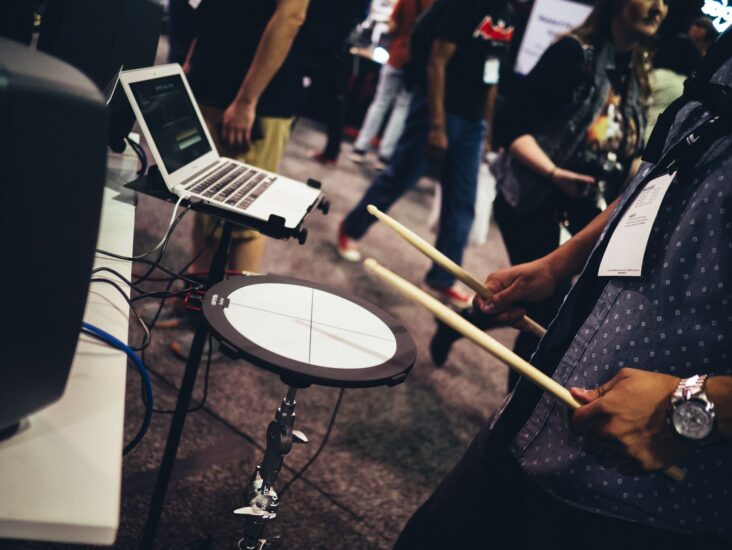
Each tool that I’ve selected below has the potential to improve your skills on the drums. They’re called practice tools as they drive your practice forward and allow you to work on certain skills.
While some of them, such as a practice pad, are quite common suggestions, I’ve also suggested a few out-the-box ideas that can be used as tools to improve at the instrument. Using every single one of these tools will be the best way to grow on the drums as quickly as possible. You may even have a few of them already, and you’ll be glad to know that others are either cheap or free.
8 of the Best Tools for Drumming Practice
Practice Pad

A practice pad is one of the most important tools for drummers to have. It’s a rubber surface that feels much better to play on than other surfaces. This is because practice pads are designed to feel relatively similar to how acoustic drumheads feel.
You could position a practice pad on a table or on a snare drum stand. I prefer putting one on a snare stand because you can position it in the same way you would your snare drum.
Practice pads are all about developing your hands. If you want to get better at playing rudiments and increase hand speed, doing pad workouts is your fastest way there.
There are dozens of practice pads available out there, but my two favorites are the Drumeo P4 pad and the Reflexx pad. The Drumeo pad has multiple surfaces to strike that have varying levels of resistance, making pad playing more interesting than if you were to play on one surface. The Reflexx pad is a conditioning pad that has less rebound, making it harder to play fast patterns.
Pros
- Practice pads are excellent for working on hand technique and speed
- Most of them are fairly quiet
- They force you to focus on one thing
Cons
- If you’re only using one pad, you don’t get to work on flow around surfaces as if they were toms
Practice Bass Drum Pad
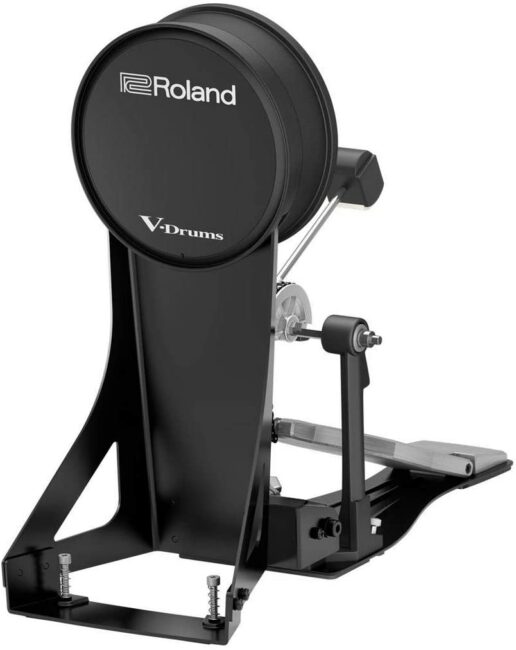
While practice pads are the main tool, many people don’t know that you get practice pads for bass drum pedals as well. These allow you to work on your pedal technique and speed. The best setup would be having a practice pad on a snare stand with the bass drum pad next to it. You’d sit on a drum throne the same way you would on a standard kit.
Unfortunately, most bass drum practice pads that I’ve tried out are either very wonky or too brittle to handle years of practice. A few years ago, the only bass drum pad I trusted was the KD-10 kick drum tower from Roland. That’s a proper electronic drum pad, though, meaning it’s quite expensive.
Drumeo recently released a pad called the QuietKick, and it looks extremely promising. They’ve taken the complaints of drummers and designed this pad that is working and durable.
Pros
- Allows you to work on foot technique and speed
- Very small compared to a bass drum
Cons
- Not easy to find high-quality kick drum pads
Metronome
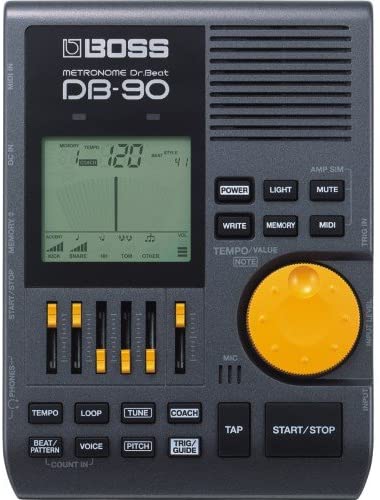
As drummers, our most vital role is being timekeepers. Being a timekeeper means it’s our responsibility to keep good time for other musicians to lock in with. If you’re a bit wonky with timing and you play in a band setup, your bandmates aren’t going to be big fans of you.
So, it’s incredibly important that you work on timing when practicing. The only tool that will help you with this is a metronome. A metronome gives steady clicks that you can play along with. You can find simple metronomes for free online or with downloadable apps.
However, I highly suggest buying a dedicated metronome. These have more functions, such as ghost clicks, varying subdivisions, and rhythm changes. You’d have to pay for an app that offers this, or you could get physical metronomes like the BOSS DB-90.
Pros
- Helps improve timekeeping
- Metronomes often become a drummer’s best friend
- Great aid in learning drum parts
Cons
- Some metronomes are quite expensive
Camera

If you’re practicing on a drum set, I strongly recommend that you record yourself playing. If you’ve never done this before, you’d be surprised at how eye-opening it can be. It allows you to keep yourself accountable, as you’ll be listening very clearly to the mistakes you’re making. You’ll also see how you look when playing the drums.
Before I started making drum videos regularly, I only recorded myself occasionally. Every time I did it, I realized that my posture was quite bad when playing fast drum fills. I wouldn’t have realized this if I didn’t see a video of myself playing.
You don’t need to use a fancy camera to record yourself, as you can simply use your phone. However, I’d recommend getting a tripod so that you can position the camera in an optimal position to see yourself and the drums.
Pros
- Recording yourself playing will help you track progress
- Seeing yourself play will point out postural weaknesses
- It’s fun to watch yourself perform
Cons
- You’ll need to buy a tripod to get the best possible camera angle
Silent Heads and Cymbals
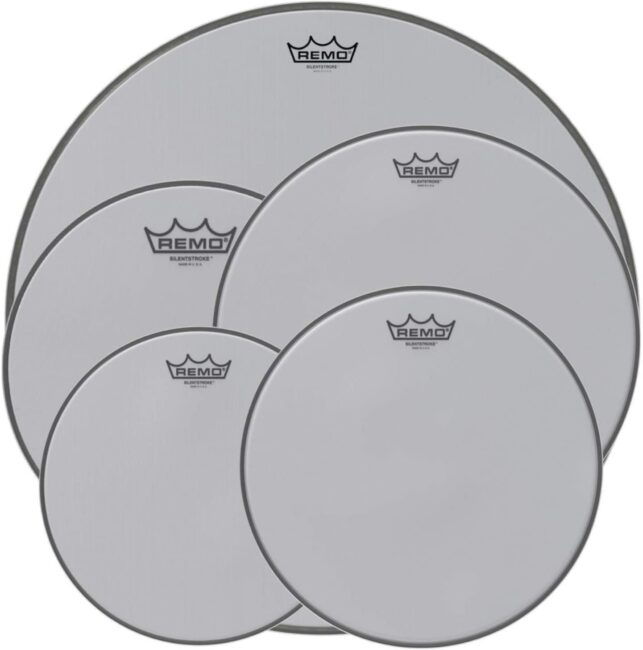
I know many drummers who detest practicing on electronic kits or practice pads. If it’s not the real thing, they won’t want to play. This is where silent drumheads and cymbals come into play. These are heads and cymbals that you can use on standard acoustic drum sets, and they only make about 20% of the noise.
The best silent drumheads are the Remo Silent Stroke heads. These are mesh heads that you attach to drum shells in place of the standard heads. They’re made of mesh material, so they feel the same to play mesh electronic drum pads.
My favorite silent cymbals are the Zildjian L80s. These are the quietest low-volume cymbals that I know of, and they feel incredible to play. Putting both these and the Remo heads on your acoustic kit will convert it into a quiet practicing machine. You’ll be able to play in one room while the people in the next won’t even be aware that you’re playing.
Pros
- Silent heads and cymbals allow you to practice on an acoustic kit
- They feel excellent to play on
- They keep the volume considerably low
Cons
- Equipping a kit with a full set of heads and cymbals will cost around $600
Electronic Drum Kit
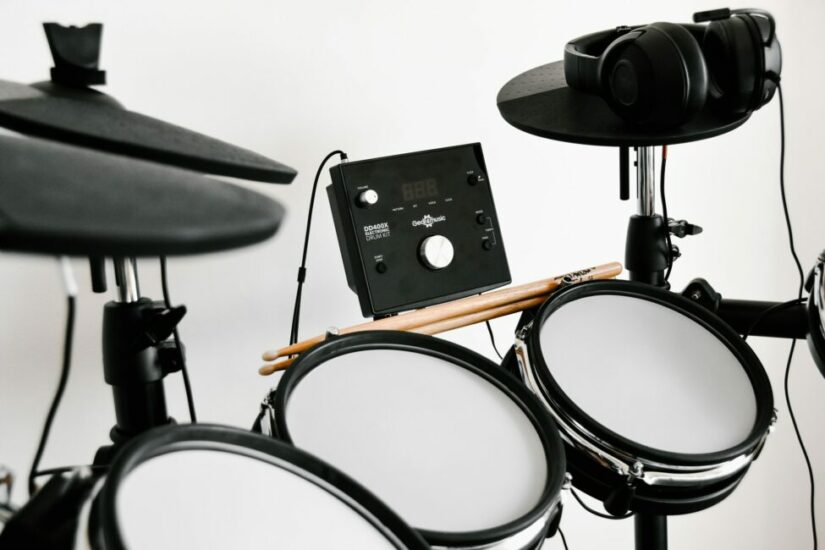
The main alternative to acoustic drums is electronic ones. While these are often great for practicing, performing, and recording, I’m suggesting an electronic drum kit as a practice tool, thanks to the coaching functions that come on most drum modules.
The coaching functions will allow you to see how accurate you are with rhythms and timing. Many kits have a feature that cuts the sound of the drums out when you’re out of time. I love this feature, as it forces you to improve to hear yourself play.
Interestingly, the more affordable electronic drum kits come with more coaching functions than the more expensive ones. This is most likely due to coaching functions being a drawcard for beginners who are more likely to buy inexpensive kits.
Roland sells the highest-quality electronic drum sets, so I’d suggest getting one of their kits. Otherwise, Alesis is a good alternative brand with more affordable options.
Pros
- Drum modules have extensive coaching functions
- You can play drums with headphones on
- Higher-quality electronic kits have Bluetooth capabilities
Cons
- Electronic drum kits are expensive
Music Subscription
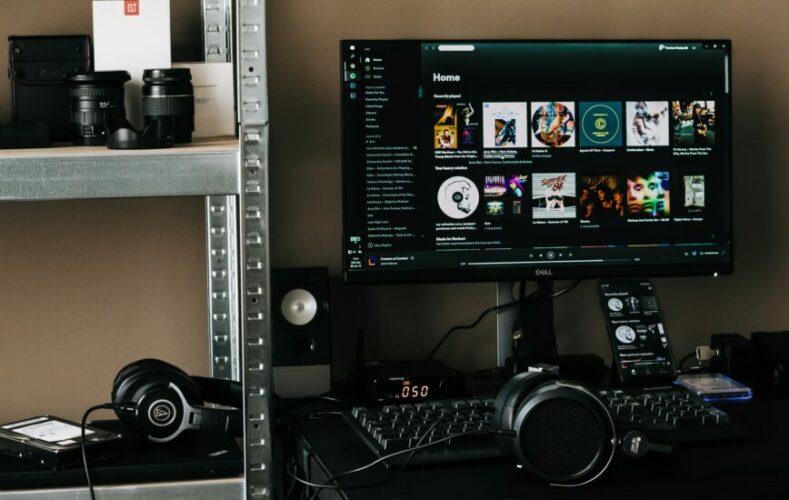
You may not have expected this one, but I’d say a subscription to Apple Music, Spotify, or YouTube Music is one of the best practice tools you could possibly have. I say this because it will allow you to listen to music while playing the drums.
Drumming is all about playing to music. While working on rudiments, grooves, and fills is necessary in your practice sessions, all those things are for the purpose of playing to music. The best way to end a practice session is to turn on a playlist and jam out to your favorite songs.
Music streaming services will allow you to make personal playlists that are easy to navigate through. If you play music for free, you’ll be interrupted by occasional ads, and that may stop the flow of your practicing. It sounds small, but I’ve noticed how beneficial it’s been to jam from the beginning to the end of a playlist.
Pros
- Streaming platforms will allow you to listen to music and jam along
- You can make personal playlists
- Suggestion algorithms on streaming platforms are incredible, so you’ll find new music that you love as well
Cons
- You need to pay a monthly subscription
Notebook

Tracking down your progress in a notebook is essential to see how much you’ve learned over time. It also allows you to jot down notes when working on things. I always work on patterns and then write down how fast I could comfortably play them. At my next practice session, I look back and aim to play it faster by the end.
You could use your phone to take down practice notes, but I found that to be incredibly distracting. I’d work on a concept, write down my progress, and then click on all the alerts that I received. This would stop the momentum of my practice routine.
Pros
- Great way of tracking progress
- Less distracting than taking notes on a phone or computer
- Very cheap
Cons
- None
FAQs
Answer: It’s important to be focused when practicing. You’ll arguably get more done in a 10-minute session of intense focus than you will with a 1-hour session that is relaxed. With that being said, the amount of time you should be practicing depends on your goals.
If you want to become a professional drummer who plays on the largest stages, I’d suggest practicing as much as possible. If you’re a hobbyist drummer who’s playing for fun, 20 minutes a day is more than enough.
As long as you’re improving after every practice session, time will be relative to what your goals are.
Answer: Yes. There are dozens of practice tools that will allow you to improve without sitting at a drum set. The most notable one is a practice pad, which will allow you to work on hand speed and develop good technique.
Remember to practice with the drums in mind. What you do on the practice pad should reflect on the drums when you play them.
Answer: You can use drum sticks to play on any surface. You’ll find that harder surfaces feel worse to play on. They also make a lot of noise. So, softer surfaces are ideal. You could find something with a bit of rebound, such as a couch. You could also play on something with no rebound, such as a pillow.
Conclusion
All the practice tools I’ve mentioned above will set you up for success in your drumming journey. They’ll help you see improvements and allow you to play when you can’t make much noise. Remember to stay consistent, and consistency is the main aspect of improvement.
You can never stop practicing. I’ve been playing drums for over 20 years, and I can see myself practicing new things for the next several decades.
For more interesting readings on drum gear, check out the following articles:

